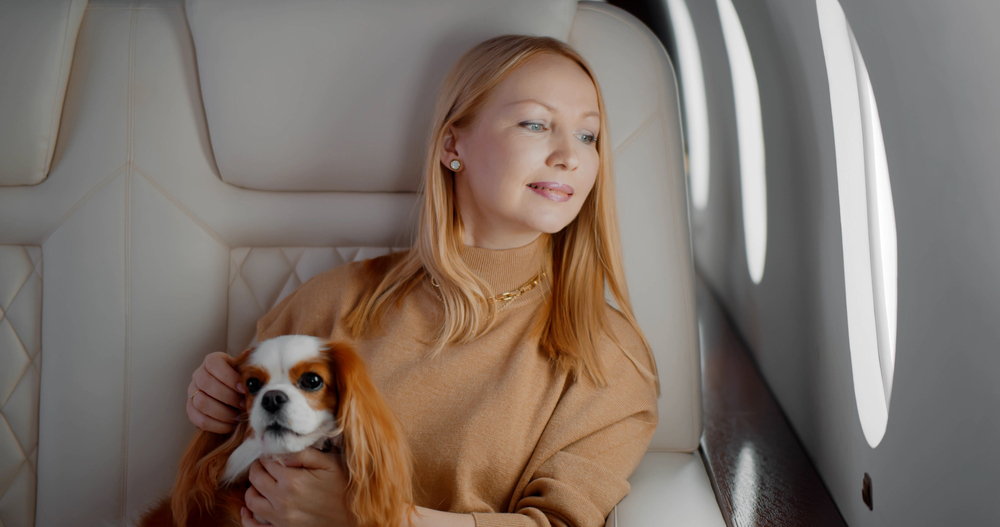If you’re planning to fly with your pet on a private plane, there are some things you need to know to make the experience as pleasant as possible for both you and your furry friend.
While some commercial airlines may not allow pets in the cabin of the plane (usually only dogs, cats, and birds), private planes do.
That being said, most people who own or charter private planes are more than happy to let their pet fly along with them in the cabin or even on their lap depending on the plane’s regulations.
Let’s take a look at some matters you need to know about regarding flying with a pet on a private plane.
Avoiding Stress
Pets traveling by plane will be exposed to various sounds, lights, and conditions that can cause stress. If you’re worried about your pet’s ability to handle these changes, talk with your vet about using an anti-anxiety medication.
Because pets are not given food or water during travel on private planes, some owners have their pets placed under anesthesia before boarding. Though it’s safe, it can increase costs and add an extra stop before reaching your destination. Discuss options with your vet before choosing how best to care for your pet while flying.
Update All Medical And Travel Documentation
Before you leave, be sure you have all of your pet’s travel documents. Airlines require health certificates and rabies vaccinations for all pets over 6 months old; most airlines also require up-to-date proof of kennel training, such as a Canine Good Citizen certificate.
Some airlines will even ask for your pet’s veterinary history, so be prepared for that as well. In addition, some major airports will require an inspection by one of their staff veterinarians before allowing your dog or cat to travel, so if you’re flying through one of those airports be aware that you may be requested to have your pet undergo a health exam.
Does Pet Size Matter?
Most private plane operators have strict pet size requirements. You need to know what they are before you book your flight and make arrangements for your pet. Don’t assume that because your pet is small, you can bring it along.
Some planes have very limited space or will only allow certain breeds of dogs or cats. If your pet has had an emotional reaction to other animals in travel situations in the past, you may want to avoid taking it into unfamiliar territory on a private plane – you never know how they’ll react in new situations and environments. Speak directly with an operator, if possible, as their rules and policies vary by company.
Cages And Carriers
You may want to start by looking into purchasing or renting a crate or carrier for your pet. This can ensure that your pet is safe, secure, and comfortable during their flight. It will also be easier for you if you’re planning an extended trip since you can just leave them in their crate where they are comfortable and surrounded by familiar scents.
Dogs should always be kept on leashes when outside of their crates, and cats should stay in carriers whenever they are being moved around or carried. It’s important that pets get used to these things before going anywhere so that travel is as easy as possible for everyone involved.
Trained And Untrained Pets
While most private planes accept pets on board, they prefer trained pets. This is especially true when it comes to potty training and eating.
However, this is not a necessity. This is because they understand that pets may be unpredictable, especially when they’re in an unfamiliar place. If you want to travel with your pet, it’s best to talk to your flight crew ahead of time and make sure that there aren’t any specific restrictions for pets.
Flying with a pet on a private plane doesn’t have to be stressful if you take the proper precautions ahead of time. Be sure to plan ahead and follow the requirements of your carrier to ensure a safe and comfortable flight.

